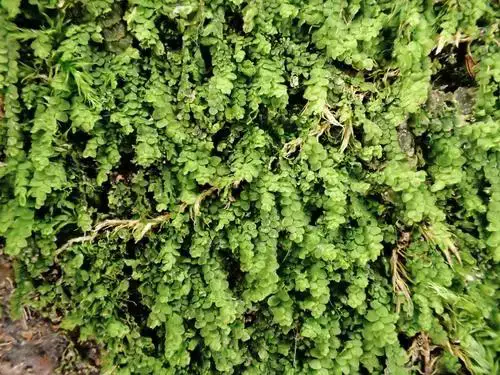
397498.jpg from: https://inpn.mnhn.fr/espece/cd_nom/6708
Introduction
In the vast and captivating world of bryophytes, the Lejeunea cavifolia (Ehrh.) Lindb. moss stands out as a remarkable member of the Lejeuneaceae family. This tiny, unassuming plant has captured the hearts of enthusiasts worldwide with its intricate beauty and fascinating ecological roles. Join us as we delve into the intricate world of this moss, exploring its morphology, global distribution, and the remarkable adaptations that have allowed it to thrive in diverse habitats.
Background
Before we dive into the specifics of Lejeunea cavifolia, it’s essential to understand the broader context of bryophytes. These non-vascular plants, which include mosses, liverworts, and hornworts, are often overlooked but play a crucial role in various ecosystems. They are among the oldest land plants, with a rich evolutionary history dating back millions of years. Despite their diminutive size, bryophytes are incredibly resilient and have adapted to survive in some of the harshest environments on Earth.

3213_Lejeunea_cavifolia_2016_04_22_9514.jpg from: https://www.bryo.cz/index.php?p=mechorosty_foto&site=default&gallery=lejeunea_cavifolia&id=3213
Main Content
Morphology and Identification
Lejeunea cavifolia is a small, delicate moss that belongs to the phylum Marchantiophyta and the class Jungermanniopsida

3222_Lejeunea_cavifolia_2016_06_06_0331.jpg from: https://www.bryo.cz/index.php?p=mechorosty_foto&site=default&gallery=lejeunea_cavifolia&id=3222
. Its name is derived from the Latin word “cavifolia,” which translates to “hollow-leaved,” referring to its distinctive leaf structure. This moss forms dense, green mats or cushions on various substrates, such as tree bark, rocks, or soil.
One of the most striking features of Lejeunea cavifolia is its leaves, which are deeply concave and arranged in two rows along the stem. These leaves are often described as “inflated” or “balloon-like,” giving the plant a unique and whimsical appearance. The leaves are also translucent, allowing light to penetrate and reach the chloroplasts within, facilitating photosynthesis.
Global Distribution and Habitat
Lejeunea cavifolia is widely distributed across the globe, found on every continent except Antarctica. It thrives in a variety of habitats, from temperate forests to tropical rainforests, and can even be found in urban areas. This moss is particularly abundant in regions with high humidity and moisture levels, as it requires a consistent supply of water to survive.
Despite its delicate appearance, Lejeunea cavifolia is remarkably resilient and can adapt to a wide range of environmental conditions. It is often found growing on tree bark, rocks, or soil, forming intricate carpets or cushions that add a touch of green to its surroundings.
Ecological Roles and Adaptations
Lejeunea cavifolia plays a vital role in various ecosystems, serving as a microhabitat for numerous tiny organisms, such as tardigrades, rotifers, and nematodes. Its dense mats provide shelter and moisture, creating a miniature ecosystem within itself.

Lejeunea_cavifolia_(c%2C_144714-480309).JPG from: https://de-academic.com/dic.nsf/dewiki/2408836

2019-07-08-10-54-40-800×600.jpg from: https://www.britishbryologicalsociety.org.uk/learning/species-finder/lejeunea-cavifolia/

26013387847_7936ba9851_b.jpg from: https://www.flickr.com/photos/12639178@N07/26013387847/
One of the most fascinating adaptations of Lejeunea cavifolia is its ability to survive desiccation. During periods of drought, the moss can enter a state of dormancy, curling up its leaves and reducing its metabolic activity to a minimum. Once moisture returns, it can quickly revive and resume its normal growth and function.
Case Studies/Examples
In the Pacific Northwest region of North America, Lejeunea cavifolia is a common sight in old-growth forests, where it thrives on the bark of ancient trees. Its presence is often used as an indicator of ecosystem health, as it requires specific environmental conditions to thrive.
In tropical rainforests, Lejeunea cavifolia plays a crucial role in nutrient cycling and water retention. Its dense mats help to retain moisture and prevent soil erosion, while also providing a suitable habitat for various microorganisms involved in decomposition processes.
Technical Table

medium.jpeg from: https://www.inaturalist.org/taxa/164483-Lejeunea-cavifolia

848206.jpg from: https://www.bio-forum.pl/messages/3280/847330.html
| Characteristic | Description |
|---|---|
| Phylum | Marchantiophyta |
| Class | Jungermanniopsida |
| Family | Lejeuneaceae |
| Genus | Lejeunea |
| Species | cavifolia |
| Common Name | Lejeunea |
| Leaf Arrangement | Two rows, deeply concave |
| Habitat | Tree bark, rocks, soil |
| Distribution | Widespread globally |
| Ecological Role | Microhabitat, nutrient cycling, water retention |
Conclusion
Lejeunea cavifolia is a remarkable moss that deserves our appreciation and admiration. Its intricate morphology, global distribution, and ecological roles make it a fascinating subject of study for enthusiasts and scientists alike. As we continue to explore the intricate world of bryophytes, we are reminded of the incredible diversity and resilience of life on our planet. Perhaps the next time you encounter a verdant carpet of

P1250079.JPG from: https://allucdecuc.blogspot.com/2020/11/verdet-en-el-talus-lejeunea-cavifolia.html

3210_Lejeunea_cavifolia_2009_07_10_7568.jpg from: https://www.bryo.cz/index.php?p=mechorosty_foto&site=default&gallery=lejeunea_cavifolia&id=3210
moss, you’ll pause and appreciate the intricate beauty and ecological significance of these unassuming yet remarkable plants.